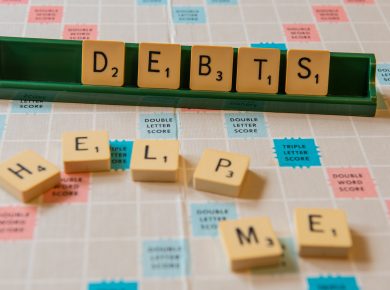Introduction
Living under the weight of debt can be a suffocating experience, affecting every aspect of our lives, from our mental well-being to our financial stability. However, it’s important to remember that with the right strategies and determination, it is possible to break free from this cycle and regain control of your financial future. So, In this article, we will outline a step-by-step guide to help you emerge from a vicious debt cycle within a year.
1. Face the Reality
The first step to breaking free from a debt cycle is to face the reality of your situation. Gather all your financial statements, bills, and documents related to your debts. Thus, create a comprehensive list, including the outstanding balances, interest rates, and minimum payments for each debt. Also this will serve as a clear snapshot of your financial landscape.
2. Set Clear Goals
Establishing clear, achievable goals is crucial in any journey towards financial freedom. Determine how much debt you aim to pay off within the next year. Also, be specific about the amounts and deadlines, and consider breaking down your goals into smaller, manageable milestones.
3. Create a Realistic Budget
A well-structured budget is the cornerstone of any successful debt repayment plan. Furthermore, analyze your income and expenses to identify areas where you can cut back or reallocate funds towards debt repayment. In addition, remember to allocate a portion of your budget for emergencies and unexpected expenses.
4. Prioritize High-Interest Debts
Focus on paying down high-interest debts first. These are the ones that are costing you the most in terms of interest charges. By prioritizing them, you can reduce the overall amount you’ll pay in interest over time, accelerating your journey towards financial freedom.
5. Explore Debt Consolidation or Refinancing Options
Consider consolidating or refinancing your debts, especially if you have multiple high-interest loans. Moreover, this can help streamline your payments and potentially lower your interest rates, making it easier to manage your debt load.
6. Increase Your Income
Look for opportunities to increase your income. This could involve taking on a part-time job, freelancing, or selling items you no longer need. Thus, Every extra dollar earned can be put towards your debt repayment, helping you reach your goals faster.
7. Cut Unnecessary Expenses
Examine your lifestyle and identify areas where you can cut back. Also, this might involve cooking at home more often, canceling unused subscriptions, or finding more cost-effective alternatives for your regular expenses.
8. Build an Emergency Fund
While focusing on debt repayment, it’s important to simultaneously build an emergency fund. Having a financial cushion will help prevent future reliance on credit cards or loans in case of unexpected expenses.
9. Stay Disciplined and Consistent
Consistency is key when it comes to overcoming a debt cycle. Stick to your budget, make regular payments, and avoid accumulating new debt whenever possible. Celebrate small victories along the way to stay motivated.
10. Seek Professional Advice
Consider consulting a financial advisor or counselor. Moreover, they can provide expert guidance and help you navigate more complex financial situations, offering personalized strategies tailored to your unique circumstances.
Conclusion
Escaping a vicious debt cycle in just one year is an ambitious but entirely achievable goal with the right mindset and strategies in place. So, by facing the reality of your situation, setting clear goals, and implementing practical steps, you can pave the way to a debt-free future and regain control of your financial well-being. Remember, every small step counts, and with persistence, you will emerge stronger and more financially empowered than ever before.
Disclaimer: This article is provided for informational purposes only and does not constitute financial, investment, or legal advice. The author and publisher are not responsible for any decisions made based on the information provided. Readers are advised to seek professional advice for their specific circumstances. Any reliance on the information in this article is at the reader’s own risk.
To read more, click here
Thank You For Reading, feel free to ask any questions in the comment section below.
Follow us on Social Media Platforms,
Click Here: Instagram, Facebook, YouTube, and Twitter
Stay Informed, Stay Responsible with My Finance World!










